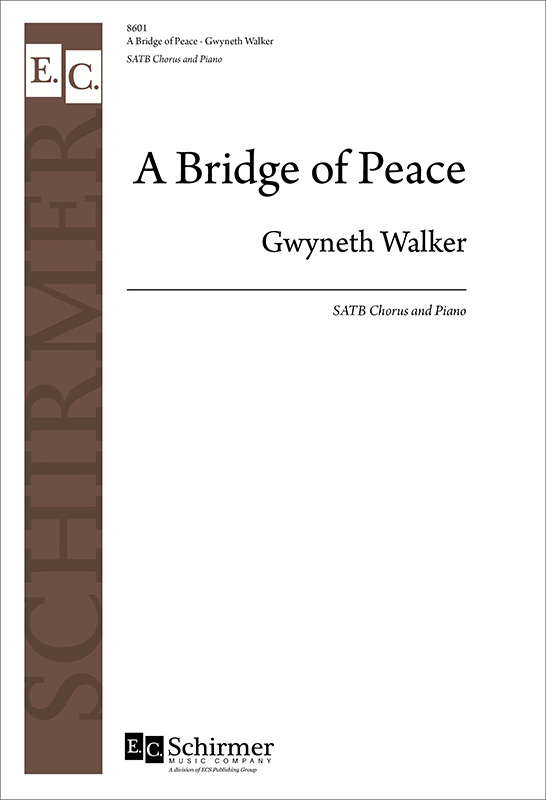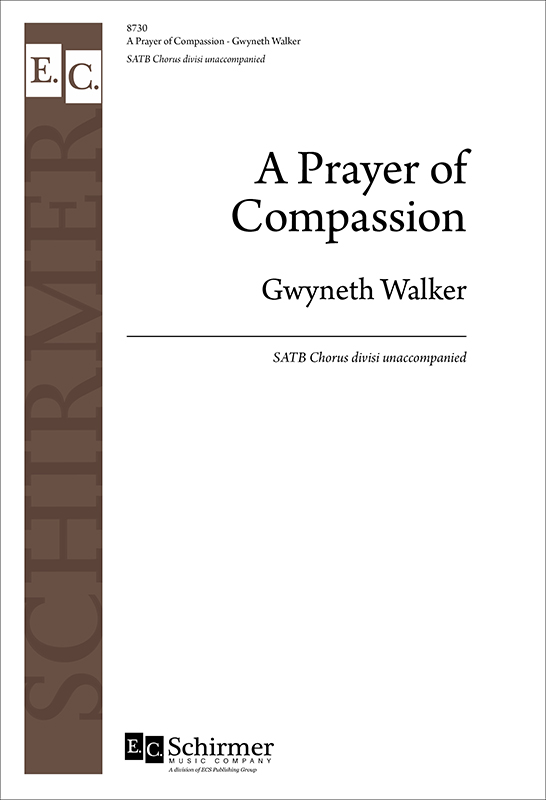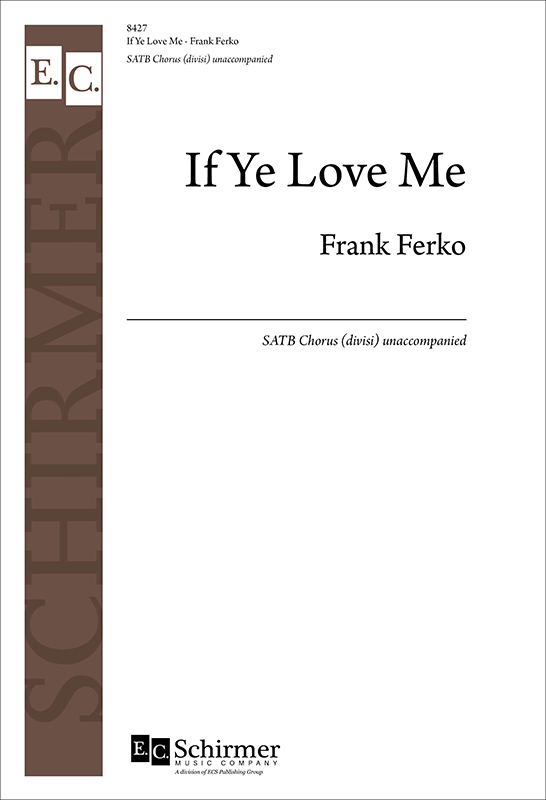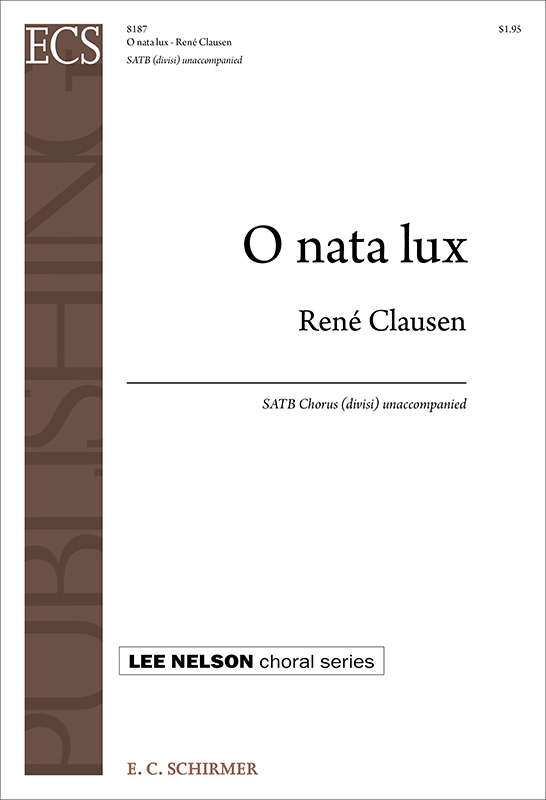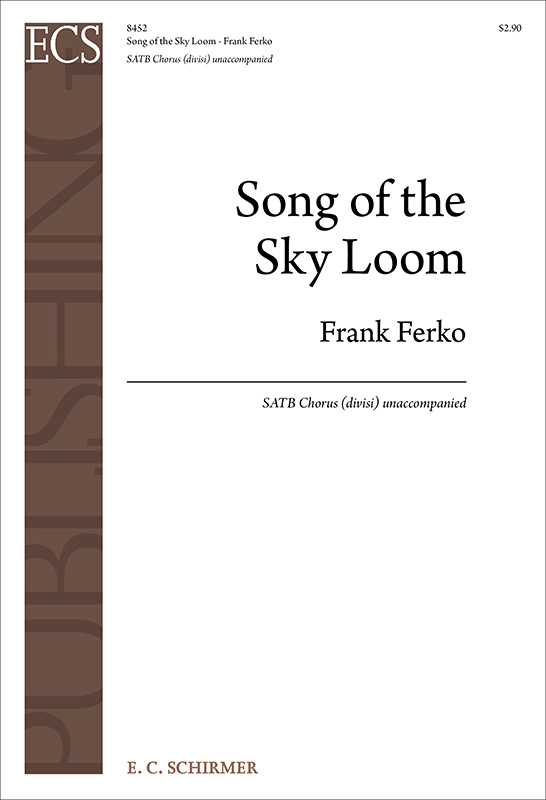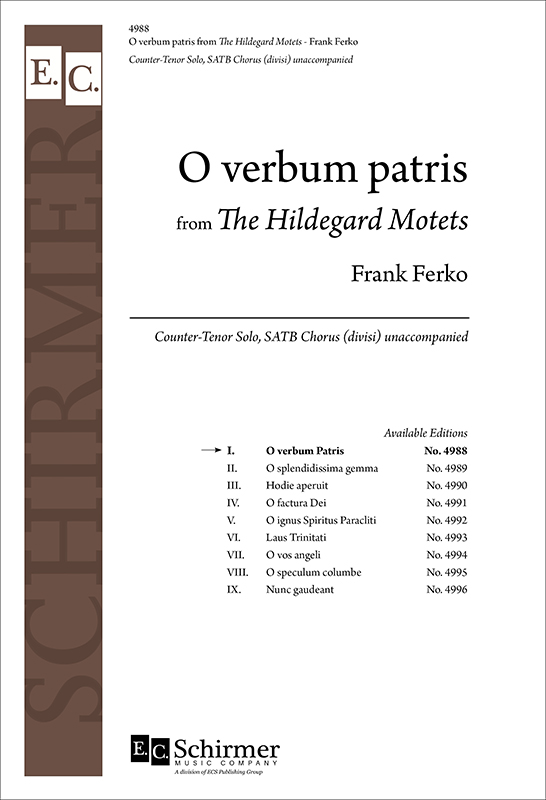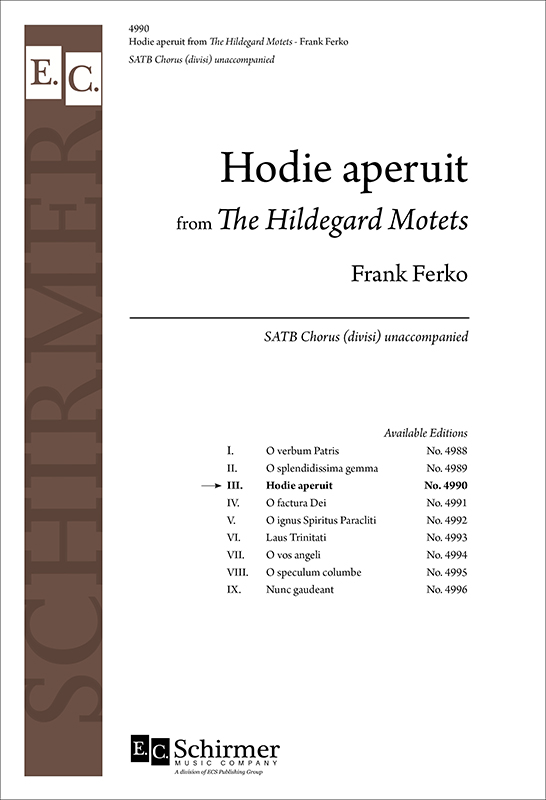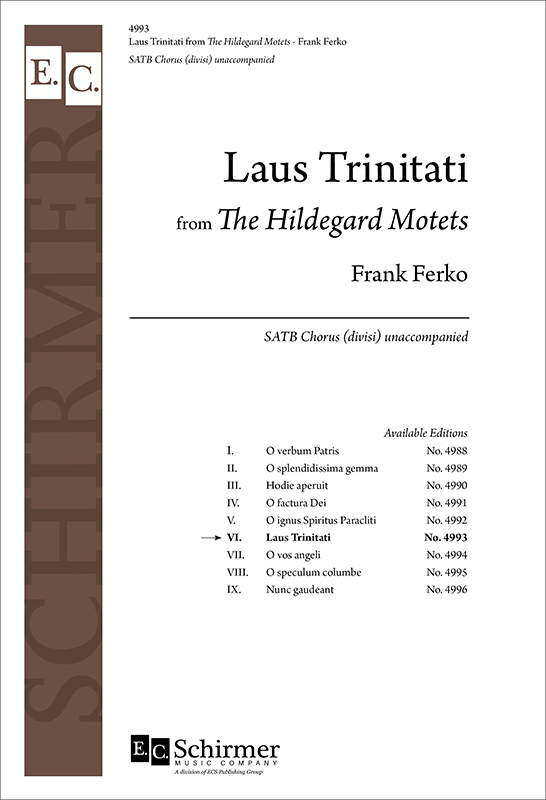In Celebration of the Human Voice - The Essential Musical Instrument
Home | Doo Wop | Barbershop | World | Contemporary | Christian | Vocal Jazz | Choral | Christmas | Instructional | Arrangements
Classical | Opera | Musicals | Personality | Young Singers | Disney | Videos | Songs | The Artists

Sheet Music Series
Schirmer Choral Series
All | SA | SAA | SAB | SATB | SATB divisi | SSA | SSAA | SSAATTB | SSAATTBB | SSATB | SSATBB | SSATTB | TTBB | Unison
Individual Folios
SATB divisi
Displaying 1-10 of 10 items.
This is a song of hope--of building a bridge of peace between the Israeli and Palestinian peoples. Their trees (Jaffa Orange in Israel, Olive on Arab lands) reach out their branches as hands across the sky. The musical setting presents the opening verses in dialogue between women's and men's voices. A combative middle section introduces words such as oppressor and jailor. Reference is made to poisoned gases and scud missiles. And then the music heals. There is a shift to the major tonality. The voices soar with the phrases "let us build a strong bridge of jasmine understanding, where each shall sit with her child, and none shall make them afraid." Duration: 4:00
Composer: Gwyneth Walker
This is a prayerful, homophonic setting of texts from three sources: Psalms 4:8, Psalms 5:8, and the final line from John Greenleaf Whittier's "Divine Compassion." Set for SATB chorus (divisi) unaccompanied, the music is approachable and sensitive. Moments of reflection give way to moments of grandness, "Only by your Grace, not by my merit, no praise be mine." The piece ends quietly, "Let me keep a heart that still can feel, and eyes that still can weep." In today's world, a prayer for us to remain sensitive to suffering is never out of place. Duration: 1:45
Composer: Gwyneth Walker
If Ye Love Me was composed as a reflective commentary on the well-known motet by Thomas Tallis (1505-1585). Homophony predominates in the first section but with clusters rather than the traditional harmonies used by Tallis. At approximately the midpoint of the piece, the texture is reduced to a very simple four-voice contrapuntal texture as a brief reference to Tallis' style. The chorus then divides into two groups with one group continuing the counterpoint which is now expanded into a more active and complex style. The second group of voices returns to the homophonic style, but now in widely expanded harmonies. Thus, the motet concludes with homophony and counterpoint sounding simultaneously. Duration: 2:00
Composer: Frank Ferko
This masterful setting is appropriately luminous and lush. For advanced SATB divisi choirs, (SSAATTBB but with a few measures of even more divisi.) This is Rene Clausen at his finest, evoking lyrical and sensitive singing.
Composer: Rene Clausen
"In the summer of 2011, while I was visiting my friends Don and Sally Roberts in Santa Fe, Sally asked me if I would be interested in writing a new choral work for Don in celebration of his upcoming 75th birthday. The idea appealed to me very much, so I readily agreed to write the piece. Since Don has enjoyed a lifelong interest in the American Southwest Pueblo people and their customs, Sally provided me with several Tewa texts, in English translation, to consider for musical setting. I was particularly drawn to the imagery of Song of the Sky Loom, so that poem became the basis for the new work.
The music begins with two baritone soloists singing an introductory 'call-and-response' to which the entire chorus eventually responds. The opening line of text is first presented in fragmented form, as if voices from all areas of nature gradually rise up and then merge into a unified chordal texture. As the text turns to the imagery of weaving, the musical texture, accordingly, bec
Composer: Frank Ferko
The Hildegard Motets comprise a cycle of nine unaccompanied choral motets using texts by the 12th century abbess Hildegard von Bingen (1098-1179). The texts were extracted from Hildegard's opus of more than seventy sacred poems titled Symphinia armonie celestium revelationum. Although these poems have been translated into English (more than once) and some of the translations are quite brilliant, I chose to set the original Latin texts as I felt they remained closer to Hildegard's own thoughts. The nine poems used in this cycle were selected according to their appropriateness to seasons in the Christian liturgical caldendar (thus, most of them can be sung in specific liturgical settings) and to their appropriateness to the structured plan of this cycle as well as for their sheer poetic beauty. Hildegard's poetic vocabulary was unusual and unique; she frequently used language that is not found in standard Latin liturgical texts. As with the music sh
Arranger: Frank Ferko | Composer: Hildegard von Bingen
The Hildegard Motets comprise a cycle of nine unaccompanied choral motets using texts by the 12th century abbess Hildegard von Bingen (1098-1179). The texts were extracted from Hildegard's opus of more than seventy sacred poems titled Symphinia armonie celestium revelationum. Although these poems have been translated into English (more than once) and some of the translations are quite brilliant, I chose to set the original Latin texts as I felt they remained closer to Hildegard's own thoughts. The nine poems used in this cycle were selected according to their appropriateness to seasons in the Christian liturgical caldendar (thus, most of them can be sung in specific liturgical settings) and to their appropriateness to the structured plan of this cycle as well as for their sheer poetic beauty. Hildegard's poetic vocabulary was unusual and unique; she frequently used language that is not found in standard Latin liturgical texts. As with the musi
Arranger: Frank Ferko | Composer: Hildegard von Bingen
The Hildegard Motets comprise a cycle of nine unaccompanied choral motets using texts by the 12th century abbess Hildegard von Bingen (1098-1179). The texts were extracted from Hildegard's opus of more than seventy sacred poems titled Symphinia armonie celestium revelationum. Although these poems have been translated into English (more than once) and some of the translations are quite brilliant, I chose to set the original Latin texts as I felt they remained closer to Hildegard's own thoughts. The nine poems used in this cycle were selected according to their appropriateness to seasons in the Christian liturgical caldendar (thus, most of them can be sung in specific liturgical settings) and to their appropriateness to the structured plan of this cycle as well as for their sheer poetic beauty. Hildegard's poetic vocabulary was unusual and unique; she frequently used language that is not found in standard Latin liturgical texts. As with the musi
Arranger: Frank Ferko | Composer: Hildegard von Bingen
The Hildegard Motets comprise a cycle of nine unaccompanied choral motets using texts by the 12th century abbess Hildegard von Bingen (1098-1179). The texts were extracted from Hildegard's opus of more than seventy sacred poems titled Symphinia armonie celestium revelationum. Although these poems have been translated into English (more than once) and some of the translations are quite brilliant, I chose to set the original Latin texts as I felt they remained closer to Hildegard's own thoughts. The nine poems used in this cycle were selected according to their appropriateness to seasons in the Christian liturgical caldendar (thus, most of them can be sung in specific liturgical settings) and to their appropriateness to the structured plan of this cycle as well as for their sheer poetic beauty. Hildegard's poetic vocabulary was unusual and unique; she frequently used language that is not found in standard Latin liturgical texts. As with the musi
Arranger: Frank Ferko | Composer: Hildegard von Bingen
The Hildegard Motets comprise a cycle of nine unaccompanied choral motets using texts by the 12th century abbess Hildegard von Bingen (1098-1179). The texts were extracted from Hildegard's opus of more than seventy sacred poems titled Symphinia armonie celestium revelationum. Although these poems have been translated into English (more than once) and some of the translations are quite brilliant, I chose to set the original Latin texts as I felt they remained closer to Hildegard's own thoughts. The nine poems used in this cycle were selected according to their appropriateness to seasons in the Christian liturgical caldendar (thus, most of them can be sung in specific liturgical settings) and to their appropriateness to the structured plan of this cycle as well as for their sheer poetic beauty. Hildegard's poetic vocabulary was unusual and unique; she frequently used language that is not found in standard Latin liturgical texts. As with the musi
Arranger: Frank Ferko | Composer: Hildegard von Bingen
![]() Vocal Harmony Arrangements - Home
Vocal Harmony Arrangements - Home
Christian | Gospel | Standards | Musicals | Specialty | World | Barbershop | Contemporary | Vocal Jazz | Choral | Christmas
Mixed Voices | Female | Male | 8 Parts | 6 Parts | 5 Parts | 3 Parts | 2 Parts | Medleys | Solo | Folio Series | New Releases
Select a Category |
Want to Sing? - Find a Chorus Near You
List of Choruses by State | List of Choruses by City

